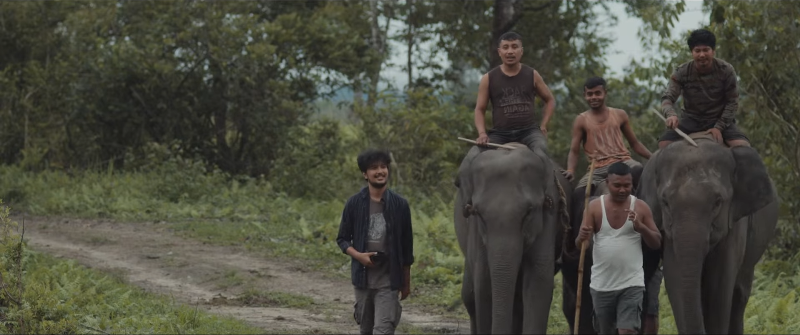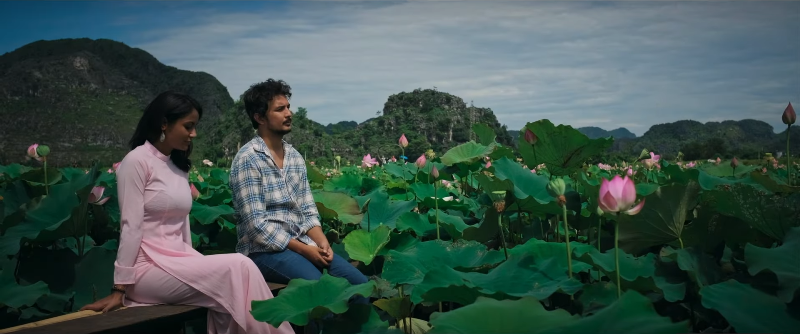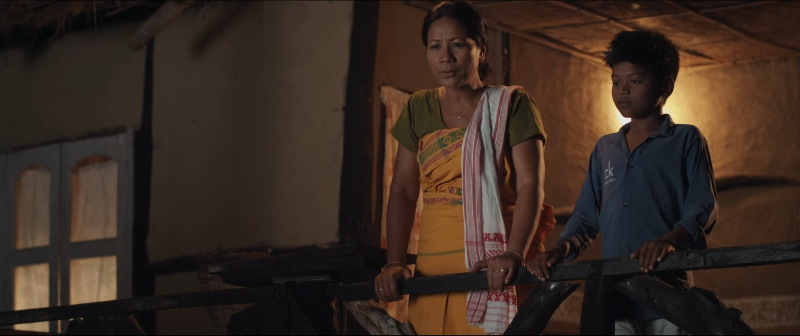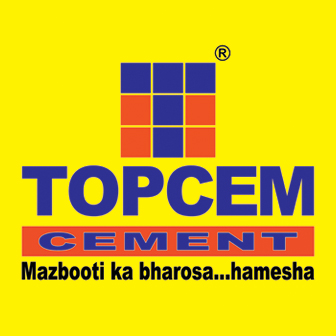Film Review: "Seuj Sandhan": A Well-Intentioned Eco-Film That Needs More Storytelling
In Parthajit Baruah's Nellier Kotha (The Nellie Story), released on December 8, 2023, actor Arghadeep Barua portrays a Ph.D. scholar from Gauhati University who travels to the remote regions of Nellie to interact with villagers and learn about the 1983 Nellie massacre. Similarly, in Rajni Basumatary's Gorai Phakhri (Wild Swans), released on June 14, 2024, Helina Daimary plays a Ph.D. scholar from Gauhati University who visits a remote village to study the experiences of women in Assam's Bodo community.
In Manju Borah's Seuj Sandhan (In Search Of Green), released on August 30, 2024, Arghadeep Barua plays the role of a documentary filmmaker, researcher, and climate activist who travels to a remote Assamese village to document its culture, traditions, and raise environmental awareness. This marks Arghadeep Barua's third major film role where research is a central theme (having previously played a Ph.D. scholar at Gauhati University in Bhaskar Hazarika's Aamis in 2019).

Except for Aamis, all the characters mentioned above are positioned as outsiders who enter secluded areas to study or experience them firsthand. Through interactions with locals, they discover new truths about the local way of life and the social, political, and ecological challenges these communities face. These revelations challenge their initial outsider perspectives, leading to a significant shift in their understanding and fostering empathy for the locals' struggles.
While all these films address serious issues, rather than directly telling a story about a specific problem, the filmmakers introduce a researcher-like character placed in the "problematic" area. The narrative then primarily consists of question-and-answer sessions with locals providing answers to the researcher's inquiries. This repetitive approach creates a resemblance to docu-fiction filmmaking. While docu-fiction can be effective for storytelling and managing production resources, its overuse can lead to a monotonous trend.
One might ask-- what's wrong with the docu-fiction storytelling format? Many filmmakers are doing it. From Iranian filmmakers like Abbas Kiarostami (Taste of Cherry, 1997) to Jafar Panahi (Taxi Tehran, 2015), or more closer to home, Haobam Paban Kumar (Nine Hills One Valley, 2021) of Manipur is practicing it. It's a widely accepted genre.
The answer is simple: docu-fiction shouldn't be an excuse for lazy filmmaking. Watching Seuj Sandhan highlights this distinction.

Seuj Sandhan by Manju Borah is arguably the weakest film of the group (and possibly the weakest and most leisurely-paced film of Borah's career). It's excessively verbose, with Arghadeep Barua's character, Rudra, frequently launching into lectures about topics like coral reef destruction, underwater ecosystems, climate change, and the need for coexistence and sustainable development.
While a love for nature and environmental concerns can motivate and define a character, in Seuj Sandhan, they become the character itself. The film feels like sitting through a fifth-grade environmental science class, offering nothing new to inspire. The dialogue is textbook-like, forced, and unrealistic. It's improbable that people would suddenly deliver speeches filled with ecological jargon during casual conversations.
It's also inconsistent that Rudra uses specific Assamese terms like "prabal tila" (coral reef) and "bijulee saki" (light) while lecturing within regular conversations with friends and villagers, yet mixes in random English words in other everyday exchanges. This inconsistency, along with the sudden shift into lecture mode, suggests the dialogue is pre-planned and feels unnatural.

The film includes unintentionally funny scenes. One instance is when Rudra's father (played by Towfiq Rahman), a wealthy entrepreneur who recently secured a contract for a smart city project in the same village Rudra is documenting and trying to conserve, highlights his company's success and announces his prodigal son's return. This meeting with board members, despite everyone understanding and speaking Assamese, is inexplicably conducted in English.
Perhaps English is used to emphasize their elite status and distance from the locals' concerns. If that's the case, it's a lack of imagination and results in a superficial scene. It's not only awkward and amusing but showcases poor direction (or lack thereof). The fake laughs from the scene still linger in my ears.
Rudra, a London-educated business graduate, has no interest in his father's business, creating a direct conflict with his father's efforts to make the smart city project a success. This conflict introduces the role of politics and the intervention of Rudra's friend, played by Jaffrin (the young schoolgirl from Manju Bora's Laaz), who works for an NGO attempting to mediate between the conflicting interests. Here, the film becomes slightly more interesting but still retains a fair amount of superficiality.

There's a symbolic relationship between Pakru, a primary school-going child who doesn't have a mother, and Ganesh, an elephant. Pakru finds solace in nature, which serves as a surrogate mother figure for him. The smart city project, which aims to clear large areas of forest and plains in the village, threatens Pakru's future as well. These elements are clearly communicated in the film without being preachy, and should have been the overall tone.
Yes, Seuj Sandhan does a good job of highlighting the environmental issues in Assam and Northeast India as a whole. Given the rapid pace of development projects involving deforestation and hill cutting, there's an urgent need to address these concerns and take action. The film also references the National Climate Vulnerability Assessment Report, which identifies eight eastern states as highly vulnerable, including Assam. However, in the end, the tools of storytelling in cinema are not data and findings, but a good narrative with emotions and visual language.

Seuj Sandhan also emphasizes the indigenous community's rights to nature and climate, intra-community clashes, and the importance of community participation in environmental protection and preservation. The female village head, portrayed by Rajni Basumatary, plans and leads a group of concerned villagers, including Rudra, in a protest against the government's actions. As a result of their protest, the government agrees to adopt a sustainable approach and make changes to the project, but an innocent life is lost in the process. I won't reveal who dies. Instead, I encourage you, dear readers, to watch the film (if ever it becomes available in the near future) and experience the same level of boredom that I felt while viewing it.
Veteran actor Nipon Goswami plays a small role in the film, which should make Seuj Sandhan his last release (unless another unreleased film comes out of the blue). Additionally, the film includes some scenes shot in Vietnam, which come into play when the story occasionally shifts to that location (scenes involving Rudra and his friends before he returns to Assam). While the production had money, I'm still unsure why Vietnam was so important to the story. Or perhaps the production was too poor to afford London (where Rudra completed his higher studies). Whatever the reasons might be, ye raaz bhi film ke sath hi chala gaya.


